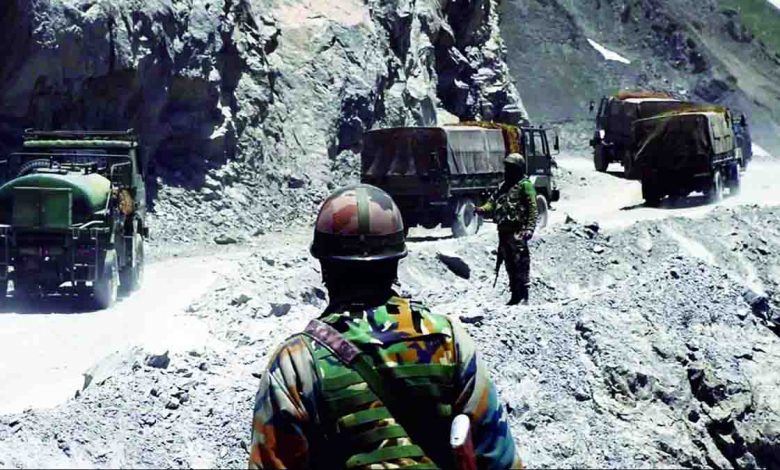Disengagement begins from Pangong

In a first step to restore peace at LAC, India, China pull back troops from Tso
The nearly 10-month-old stand-off at the Line of Actual Control (LAC) in Ladakh saw some positive development on Wednesday with the Chinese and Indian frontline troops pulling back from the flashpoints at the Pangong Tso (lake).
Making this announcement in Beijing, Chinese defence spokesperson Colonel Wu Qian said the troops from both the sides started synchronised and organised disengagement at the south and north banks of the lake. He also said the disengagement commenced “simultaneously and systematically.”
However, there was no official comment from the Indian side, so far, on the statement made by the Chinese defence ministry spokesperson and carried by China’s official media. The Government was likely to make a statement in this regard in Parliament on Thursday, it was learnt.
Sources, however, indicated here that the process of disengagement had begun. They said some tanks were withdrawn and thinning out of troops had taken place. They also said it was the first step in a long process to restore peace at the LAC.
The Chinese spokesperson said the disengagement began as part of the consensus reached in the ninth round of Corps Commander-level talks between India and China on January 24.
Sources said the partial pullback was a confidence-building measure to break the persisting logjam.
The withdrawal of the armoured elements or tanks from one of the multiple friction points in the East Ladakh sector comes nearly a fortnight after military commanders of the two armies agreed on January 24 to push for an early disengagement of their frontline troops.
This move by both the sides was the first such step to defuse tension at the LAC in Eastern Ladakh which also witnessed a bloody brawl on June 15 killing 20 Indian soldiers, including the commanding officer. The Chinese side also suffered casualties and unconfirmed reports pegged the number at 35.
After the ninth round of talks, a joint statement issued by both the armies said it was agreed to push for an early disengagement of the frontline troops. They also agreed to follow the important consensus of their State leaders, maintain the good momentum of dialogue and negotiation, and hold the 10th round of the Corps Commander-level meeting at an early date to jointly advance de-escalation.
The two sides agreed to continue their effective efforts in ensuring the restraint of the frontline troops, stabilise and control the situation along the LAC in the Western Sector of the China-India border, and jointly maintain peace and tranquility.
Incidentally, the Indian Army in an action in August last year established posts at all the strategic hill tops on the southern and northern banks of the lake. It put the Chinese troops at a great disadvantage as the Indians were able to monitor their every movement.
Also, the first face-off in May last year started from the Pangong Lake when the Chinese and Indian troops exchanged blows leaving several injured. The incident occurred when the Chinese stopped the Indian patrol claiming it was in the Chinese territory. Meanwhile, the Chinese reports as mentioned in The Global Times quoted Qian Feng, director of the research department at the National Strategy Institute at Tsinghua University that after a prolonged nine rounds of record-breaking talks between the two militaries, particularly the three most recent rounds of meetings in which both sides struck more and more consensus and the atmosphere became more constructive, disengagement became a natural step.
“This event will ease the border tensions and play important role in resuming peace and stability to the region as soon as possible,” Qian said.
Calling the move a breakthrough, analysts noted that the location of the disengagement had been a focus and a core issue of the months-long border faceoff.
The situation in the northern bank of the Pangong Tso had long been in deadlock, and as India attempted to force China to make compromise, it made provocations on the southern bank in August 2020, Qian said, noting that the reason some of the recent negotiations failed to make significant progress is the differences at this location which has been a core issue.
“Hopefully India can meet China half way and strictly carry out the consensus reached by both sides, so that the disengagement can take place smoothly, “ Wang Wenbin, a spokesperson at China’s ministry of foreign affairs, said on the side lines of a routine press conference on Wednesday.
Now both sides should monitor each other over the disengagement and make sure they all abide by the agreement, Qian said.
While it remains difficult to cancel the tense standoff and return to peace and stability once and for all, the future looks promising, Qian said.
Thursday, 11 February 2021 | PNS | New Delhi






